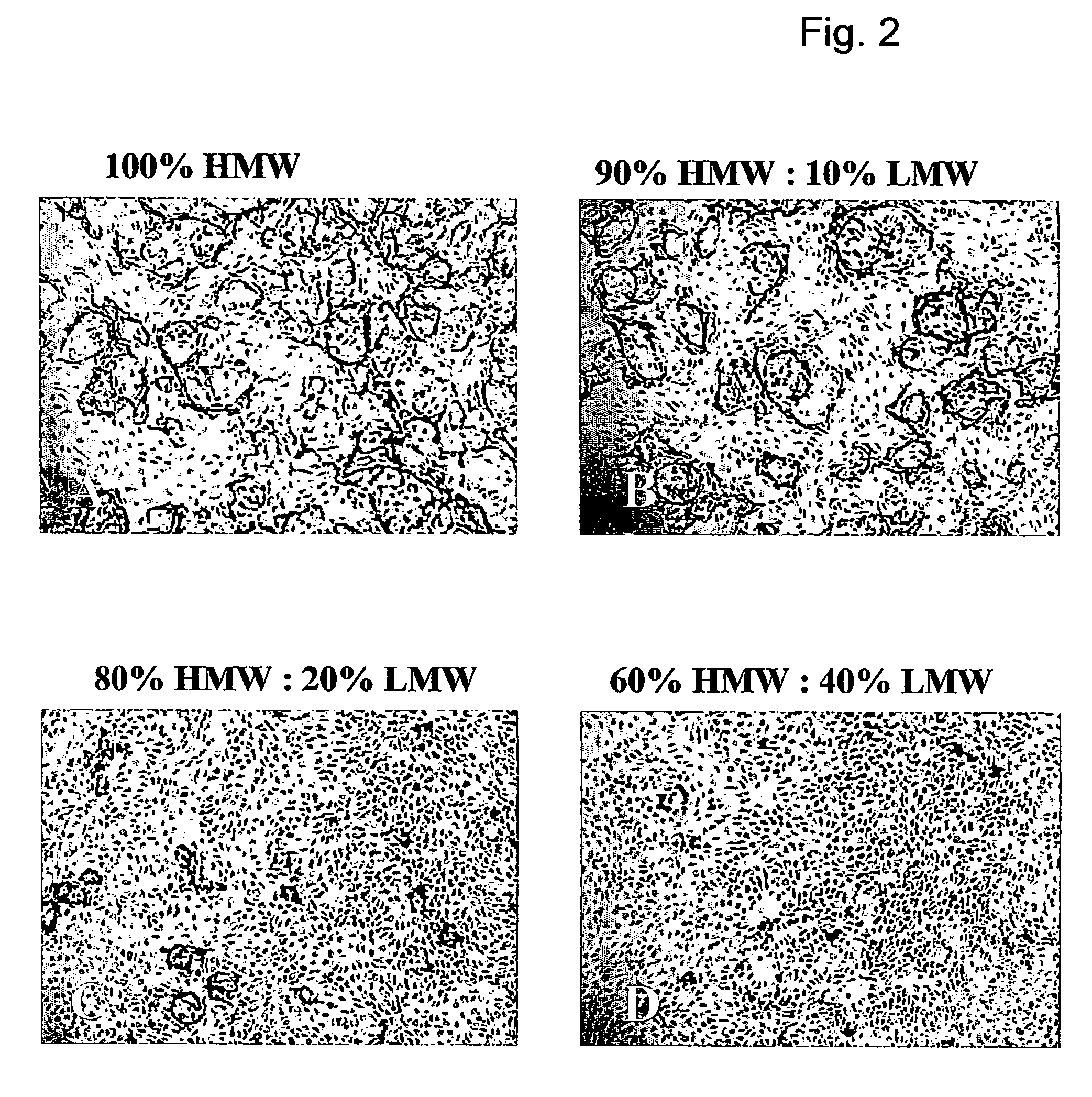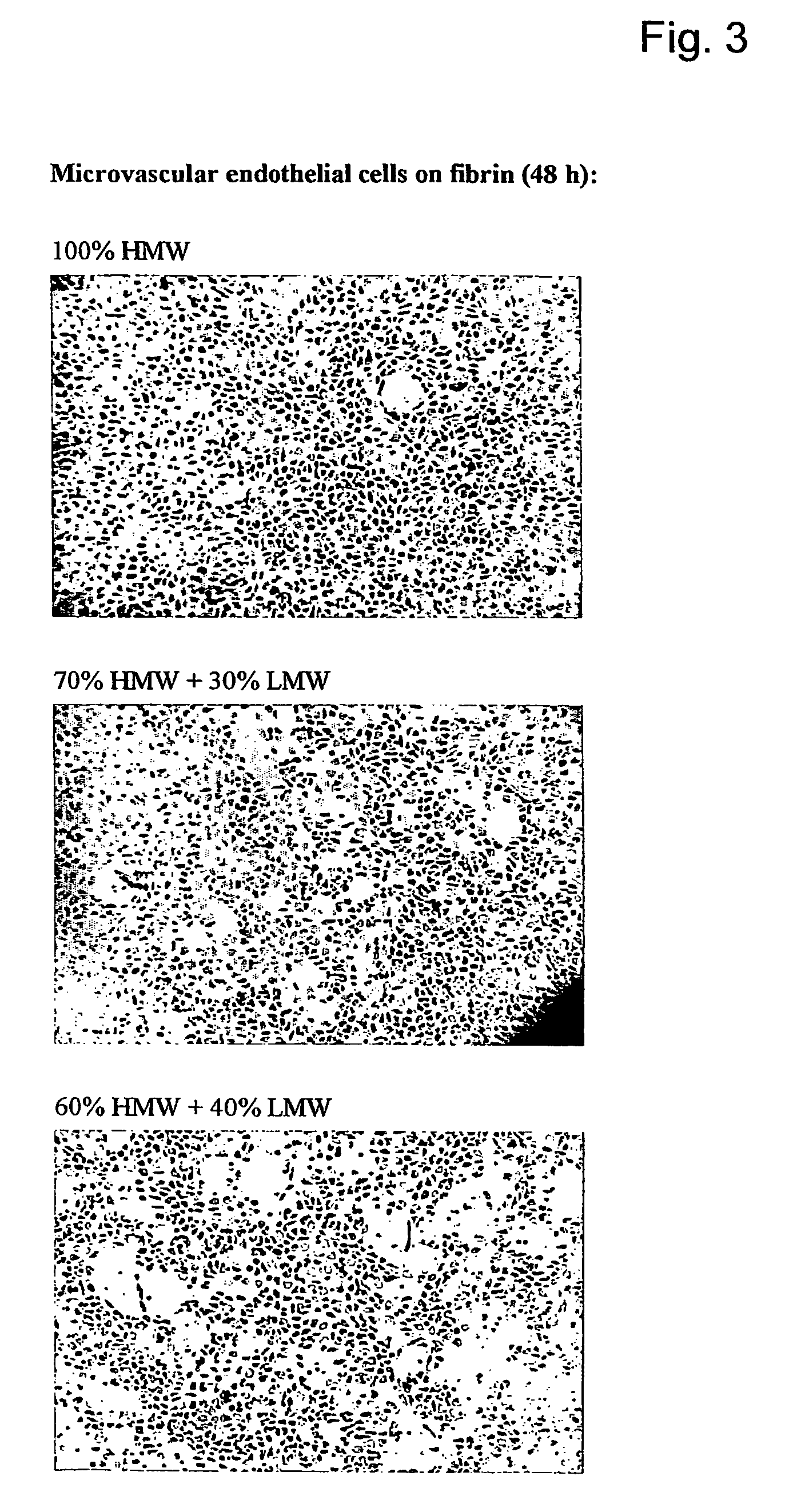Method for the acceleration or deceleration of angiogenesis using fibrin matrix formed from increased or decreased HMW/LMW fibrinogen ratio
a technology of fibrinogen and angiogenesis, which is applied in the direction of fibrinogen, angiogenin, extracellular fluid disorder, etc., can solve the problems of unduly fast degradation of fibrinogen, inadequate wound healing, and molecular heterogeneity, so as to increase and reduce cell and vessel ingrowth.
- Summary
- Abstract
- Description
- Claims
- Application Information
AI Technical Summary
Benefits of technology
Problems solved by technology
Method used
Image
Examples
examples
[0050]The in vitro angiogenesis model used in the following examples is based on the ingrowth of human prepuce microvascular endothelial cells (hMVEC) in a 3-dimensional fibrin matrix (besides, prepuce microvascular endothelial cells of other mammals may also be used). After seeding the hMVEC in a confluent monolayer on top of the fibrin matrix, these hMVEC can be stimulated to invading the fibrin matrix in which blood vessel-like structures are formed. This vessel formation takes place after stimulation of the hMVEC with angiogenic growth factors, such as fibroblast growth factor-2 (FGF-2) or vascular endothelial growth factor (VEGF), in combination with the inflammation mediator tumor necrosis factor α (TNFα).
[0051]Electron microscopic analysis of the invasive capillary, structures makes it clear that the fibrin structure, in addition to the ingrown cells, is partly broken down, which indicates that the proteolytic processes are involved in the cell invasion, in particular the cel...
PUM
| Property | Measurement | Unit |
|---|---|---|
| concentration | aaaaa | aaaaa |
| molecular weight | aaaaa | aaaaa |
| molecular weight | aaaaa | aaaaa |
Abstract
Description
Claims
Application Information
 Login to View More
Login to View More - R&D
- Intellectual Property
- Life Sciences
- Materials
- Tech Scout
- Unparalleled Data Quality
- Higher Quality Content
- 60% Fewer Hallucinations
Browse by: Latest US Patents, China's latest patents, Technical Efficacy Thesaurus, Application Domain, Technology Topic, Popular Technical Reports.
© 2025 PatSnap. All rights reserved.Legal|Privacy policy|Modern Slavery Act Transparency Statement|Sitemap|About US| Contact US: help@patsnap.com



